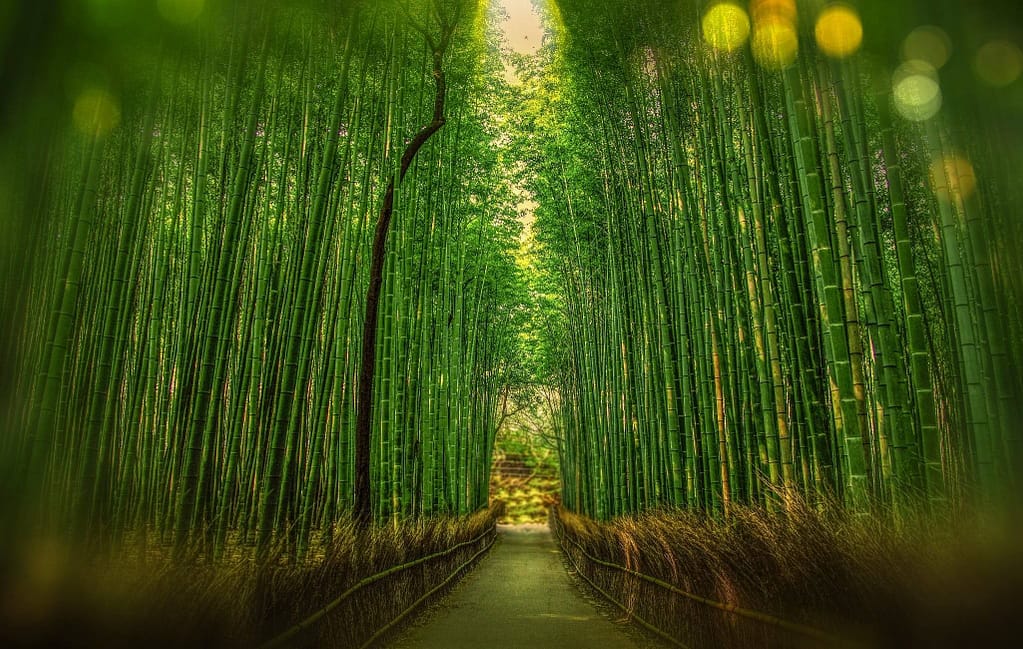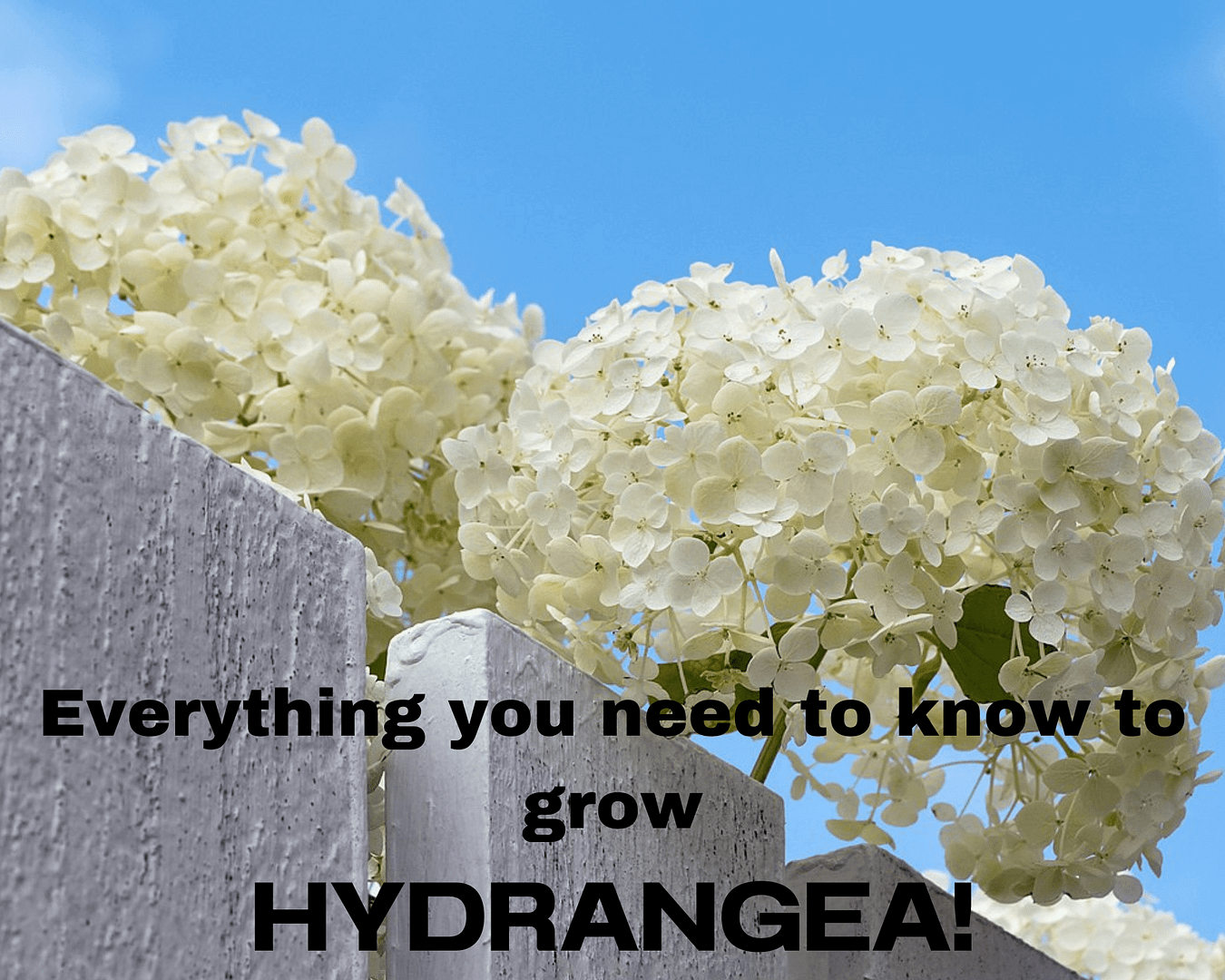This post may contain affiliate links. As an Amazon Associate we earn from qualifying purchases.
Care of a bamboo plant isn’t difficult. In fact they practically care for themselves!
Not enough gardeners grow bamboo. At least that’s our opinion. It may be that they’ve heard some mythical horror stories or that taking care of bamboo is impossibly challenging. The truth is, this plant is so versatile and grows so fast it is mind-boggling.
While some grow it as a windbreak, others grow it to add a tropical vibe to the garden or to block an ugly wall. We grow bamboo for privacy; it provides the ideal screen to keep our neighbors at bay.
Another reason to consider growing bamboo is that it’s evergreen, so while the rest of the garden is brown or barren in the winter, your bamboo will be reminding you of greener days to come.
Bamboo can thrive in USDA hardiness zones 5 to 9, which cover a significant portion of the United States. However, it’s essential to research the specific bamboo species you plan to grow, as hardiness can vary.
What you need to know about bamboo
Home gardeners can typically choose from two types of bamboo, running and clumping. The former is known for its spreading rhizomes, becoming invasive if left unchecked. We think this is the one that gives all bamboo a bad name.
It’s not impossible to control, however. To contain the bamboo’s spread, install a root barrier made of strong, impermeable material, such as high-density polyethylene, around the plant’s perimeter.
Clumping bamboo, on the other hand, is far better behaved, growing in tidy clumps.
Find out if the one you have your eye on is a runner or a clumper by visiting guaduabamboo.com.
Here’s another interesting tidbit about bamboo:
“On degraded soils, litterfall and fine roots of bamboo add a considerable amount of carbon and nutrients to the soil, which helps in improving soil health,” according to a study posted by the National Center for Biotechnology Information.
Translated, the authors are telling us that the litter from the plant, which can be substantial, and the fine, mat-forming roots are actually good for the soil.
While this is great news, be aware that the root mat makes it nearly impossible to grow anything beneath many bamboo varieties.
We have been experimenting with various plants to find something that can compete with our giant friends. So far only the Mexican petunia (8 simplex) is doing well. We get around this by popping container pots between the canes of our Bambusa malingensis ‘Seabreeze.’
Interested in propagating bamboo? Learn how right here on Gardenologist!
How to plant bamboo and care for it afterward
Choosing the right planting location makes the care of a bamboo plant easier. Some bamboo varieties prefer a full day of sun while others tolerate partial shade. Do some research on your preferred variety so that you can choose a suitable site. It will also ensure that you’re growing the right bamboo for your USDA Hardiness Zone, which you can look up here. `.
The process of planting bamboo is very much like planting other landscape plants. The folks at Lewis Bamboo suggest that you handle the plant with the root ball and not the cane.
Dig the planting hole twice as wide as the root ball and ensure that the depth will allow the bamboo to sit at the soil level.
Combine equal parts of organic material (well-composted manure or compost) and quality topsoil and use the mixture to backfill the planting hole.
Throw some organic material into the planting hole. This can be well-rotted manure or compost or whatever you have on hand.
Water the bamboo until the soil has the moisture content of a well-wrung sponge and water every day for the first month as it establishes. Never allow the soil to become flooded or otherwise overly saturated.
When you take care of a bamboo plant for the first year, no fertilizer is necessary. Avoiding fertilizer during this time helps protect the young roots from fertilizer burn.
Ongoing care for mature bamboo plants

Watering bamboo plants
“Good drainage is important – deep waterings, no standing water after a few hours, is your goal,” caution the professionals at TropicalBamboo.com. We highly recommend this company if you’ll be buying bamboo online.
Keep the soil moist during establishment. Later, the plant will tell you if it’s thirsty or waterlogged.
“If the leaves start to curl, your bamboo is not getting enough water. If the leaves stay open but the majority are yellow, the roots may be drowning and rotting,” the TropicalBamboo.com folks conclude.
Mulching the soil is critical for bamboo, although it won’t cost you a cent. Bamboo plants produce lots of leaf litter so allowing it to remain on the soil creates instant mulch. Aim for a 3-inch layer.
When to fertilize and what to use
Bamboo is a grass and it just so happens that lawn fertilizer with an N-P-K ratio of 21-5-6 is ideal, but any high nitrogen fertilizer will do the trick (see the Resources section below for our pick).
Apply the fertilizer once in early spring and again in summer. Some growers recommend additional fertilizer applications but we haven’t found them necessary. As long as the plant gets fertilizer during the shooting season, they do well.
If you prefer an organic fertilizer you’ll need to apply more of it to ensure that the bamboo gets its nitrogen fix. Otherwise, follow the application rates listed on the product you choose.
An annual application of an iron supplement will help keep the bamboo healthy and green.
Pruning the bamboo plant
Did you know that when you top a bamboo plant, it will never grow taller again? This is ideal for gardeners who like their bamboo tidy. It’s also a good idea to periodically remove dead and damaged culms (stems).
When pruning, always cut the culm ¼ inch above a node. See the diagram, above, for details.
Ensure that you don’t remove too many limbs from the bamboo. “Without limbs, the cane cannot survive. It is usually best to leave 3 or more sets of limbs for the cane’s health and appearance,” according to the pros at LewisBamboo.com.
When cutting larger culms at soil level, use a handsaw. Pruning shears and loppers can be used for top work and to remove slender culms.
Growing Bamboo in Containers
Yes, bamboo can be grown in containers, making it a great choice for those with limited garden space or for adding a touch of greenery to patios and balconies. When growing bamboo in containers, choose one that is at least 20 gallons.
Potted bamboo requires slightly different care compared to in-ground bamboo. Monitor the moisture levels carefully, as containers can dry out more quickly than the ground.
Water the plant when the top inch of soil feels dry, but avoid waterlogging. Fertilize potted bamboo regularly using a balanced liquid fertilizer, high in nitrogen and diluted to half strength.
The beauty of bamboo is that, once established, it doesn’t require a lot of care. With just a bit of attention, your bamboo plants will flourish.
Resources
Mention of a fertilizer or pesticide, or use of a pesticide or fertilizer label, is for educational purposes only. Always follow the product’s label directions attached to the container you are using. Be sure that the plant you wish to treat is listed on the label of the pesticide you intend to use. And observe the number of days between pesticide application and when you can harvest your crop.






